Dear Steemit friends :
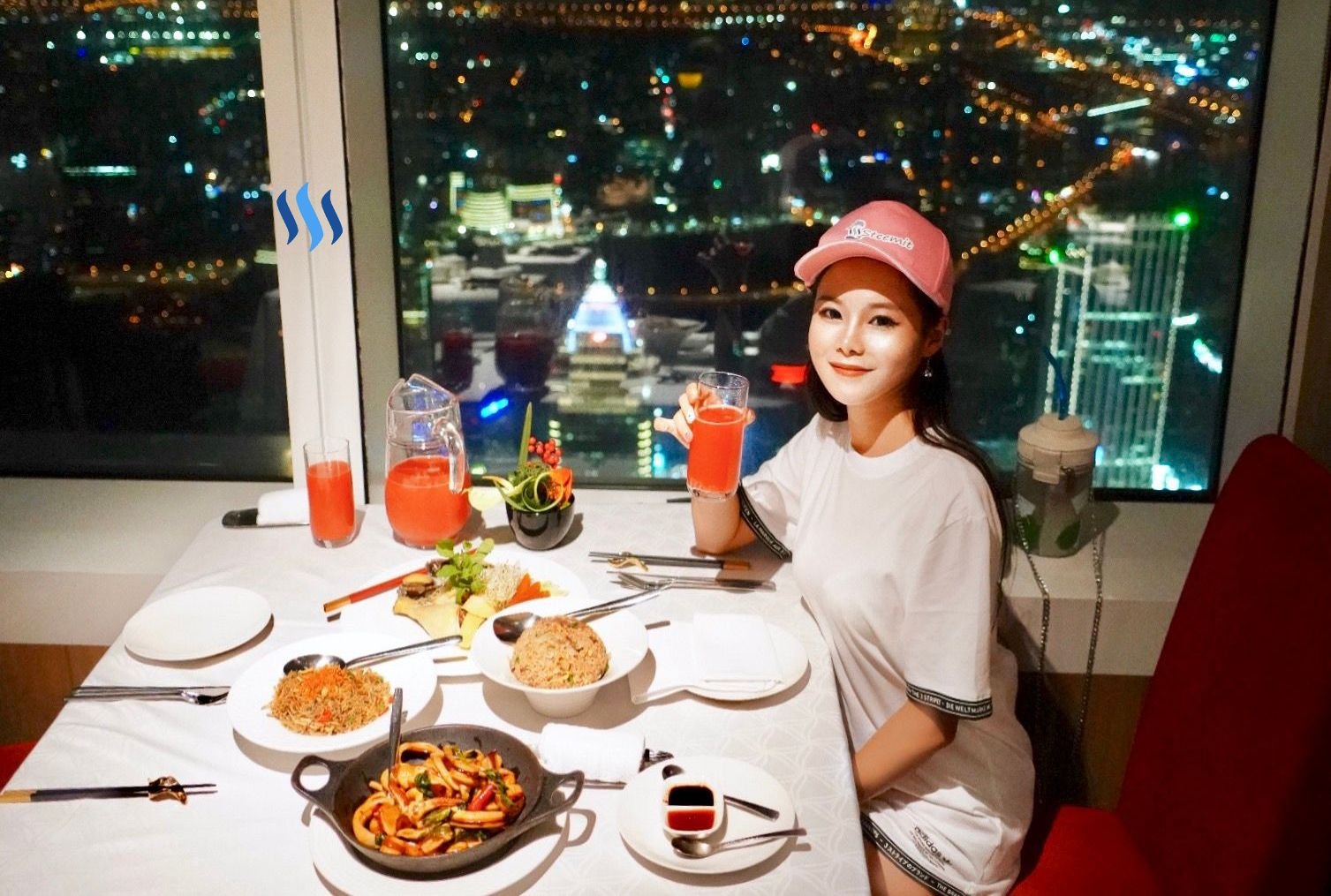
When I arrived in Taiwan a few months ago, I knew I would have to maximise my short stay seizing every opportunity to explore, experience and eat! The island, though small, is brimming with cultural intricacy, from it's innovative night market snack foods, to the infamous shrimping venues. Without a doubt, Taiwan has some of the most diverse food offerings in Asia and indeed the world - a result of it's culturally rich and diverse history.
In the 60's and 70's, Taiwan underwent significant economic growth and was one of the four Asian Tigers alongside South Korea, Hong Kong and Singapore. It wasn't until the economic reforms beginning 1978 in China, that the Chinese economy began it's wonder growth, eventually eclipsing the growth of the four Asian Tigers.
Twenty years ago, Taiwan seemed to be the place everything was manufactured or assembled. If you take a look at a toy or some old electronics from the 1990's, you'll probably see it labelled with Made in Taiwan. Nowadays we are used to seeing Made in China on everything, often joking about the quality of some of it's products. This exemplifies the shift of Taiwan's economic reliance on the rest of the world, to that of China as the once labour intensive industries in Taiwan are steadily shifted off-shore.
In today's Miss. Delicious, we'll be visiting a restaurant inside the most significant landmark in Taiwan which of course is the Taipei 101 skyscraper. Located in the Xinyi district, the Taipei 101 is the pride and joy of Taiwan. It symbolises the prosperity of Taiwan over the last few decades but also represents Taiwan's future as an advanced economy with an important position in the world's economy.
Whenever I see anything related to Taiwan, it is almost always accompanied with shots of the Taipei 101. Whether it's my friend's in Taiwan celebrating new year or friends sharing pictures of their visits to Taiwan, there is almost always the Taipei 101 building in their photo sets.

The Taipei 101 is named as such because of it's 101 floors. After it's completion in 2004, it was officially the tallest building in the world until the Burj Khalifa completed in 2010. Since then, there have been 3 other buildings completed which are taller than the Taipei 101, namely the Shanghai Tower, Abraj Albait Towers and One World Trade Center.
Despite losing it's status as the world's tallest building, the Taipei 101 continues to be an important and significant symbol of Taiwan's advancing technology as well as Asian tradition.
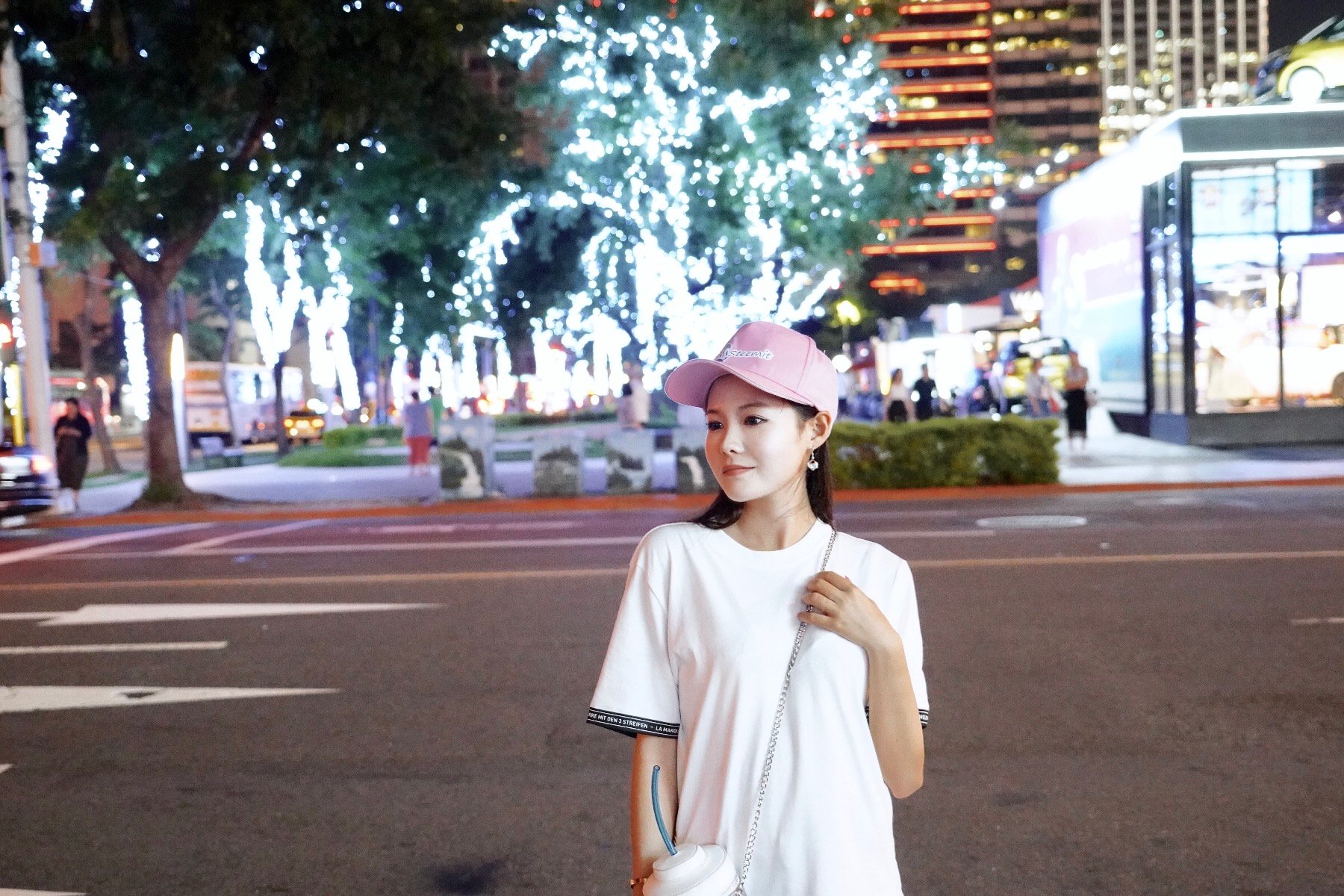
The Taipei 101 is located in Xinyi district, considered the prime shopping district of Taipei. It's a very new district and thus all of the buildings are very modern. The Shin Kong Mitsukoshi department store operates over a dozen department stores in the district and there you will find all of the famous luxury designer brands from all over the world.
Certainly, this area is very popular amongst the younger generation of Taiwanese people, with it's shops, restaurants, bars and clubs, there are many activities which appeal to the young.
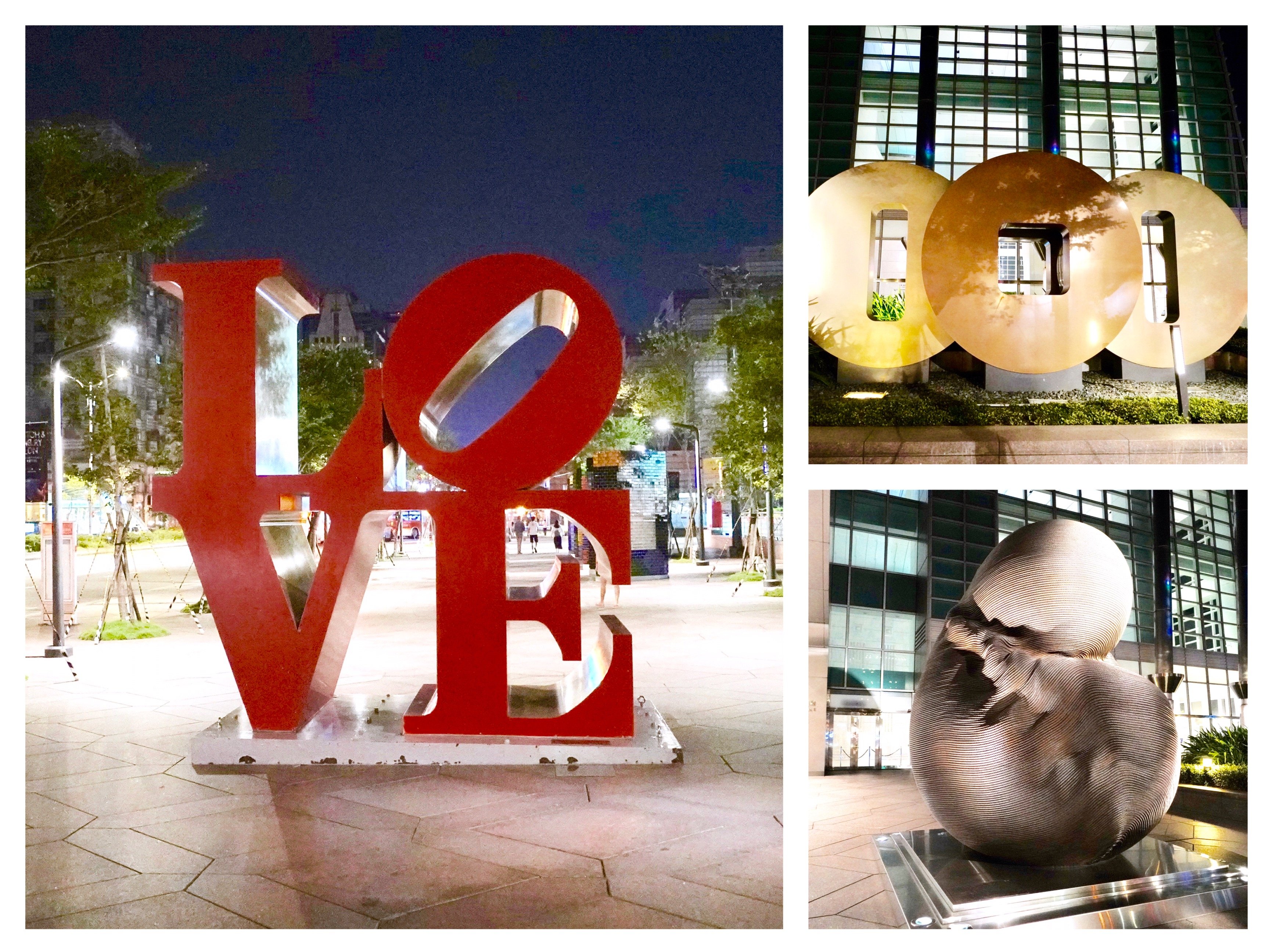
Once called the Taipei World Financial Center, the Taipei 101 is a multi-use skyscraper with a large multi-storied department store at it's base, and then restaurants and observation decks in the upper floors. In between, you'll find the offices of some of the worlds largest companies.
There are no buildings in the area which are anywhere near the height of the Taipei 101, in-fact, the next tallest building in Taipei is the 51-story Shin Kong Life Tower. Looking up from the base of the building, you really get a sense of it's height by how much your neck has to bend backwards to see the top!

Most of the foot traffic of the building is actually to the multi-storied department store adjoining the main tower. I had a quick browse around and reconfirmed my theory that Taiwanese people are obsessed with Line (the chat program) and it's Line characters like Brown and Cony.

Shinyeh Dining at Taipei 101
I decided to combine the observation deck experience with a Taiwanese food experience. Luckily, Shinyeh, which is a food trendsetter in Taiwan opened on the 85th floor giving it's guests and opportunity to taste traditional Taiwanese cuisine whilst gazing at the Taipei night time city view.

Shinyeh was established in 1977 by a woman named Lee Xiu Ying. In the beginning, it was a humble restaurant with just 11 tables, and served home cooked Taiwanese style dishes. In Taiwan, restaurants which have thrived for more than 40 years are an example of true authenticity and quality. With such a competitive food industry, often labelled as the mecca of food in Asia, you can almost guarantee that such a reputable establishment will leave you with unforgettable dining experiences.
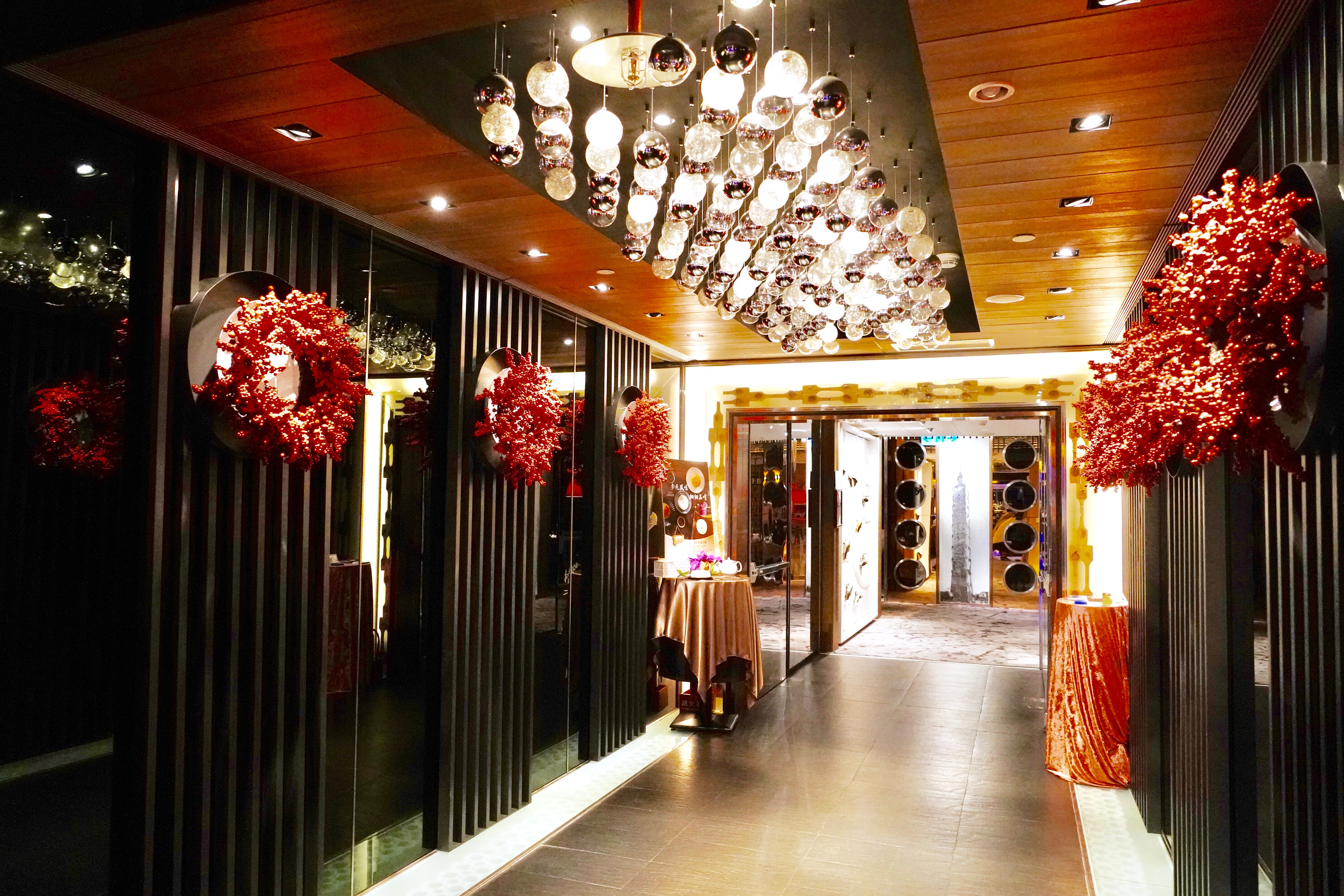
Although considered a high-end banquet venue, Shinyeh's modest beginnings were always focused on simplicity and tradition. This is the foundation through which their business has thrived over the years. Their ethos : develop home cooked dishes into something that could be served in a restaurant setting.

Walking into the restaurant, it is clear that despite it's modest beginnings, the Shinyeh dining experience has stepped up a notch (or 85), and is now a full on high-end dining venue. There isn't anything that particularly defines the interior design, especially relating to Taiwanese tradition or Chinese heritage, but then I am reminded that the origins of this restaurant are in it's authentic dishes. Still, the interior decor gives a pleasant ambience, further uplifted by the panoramic views below.
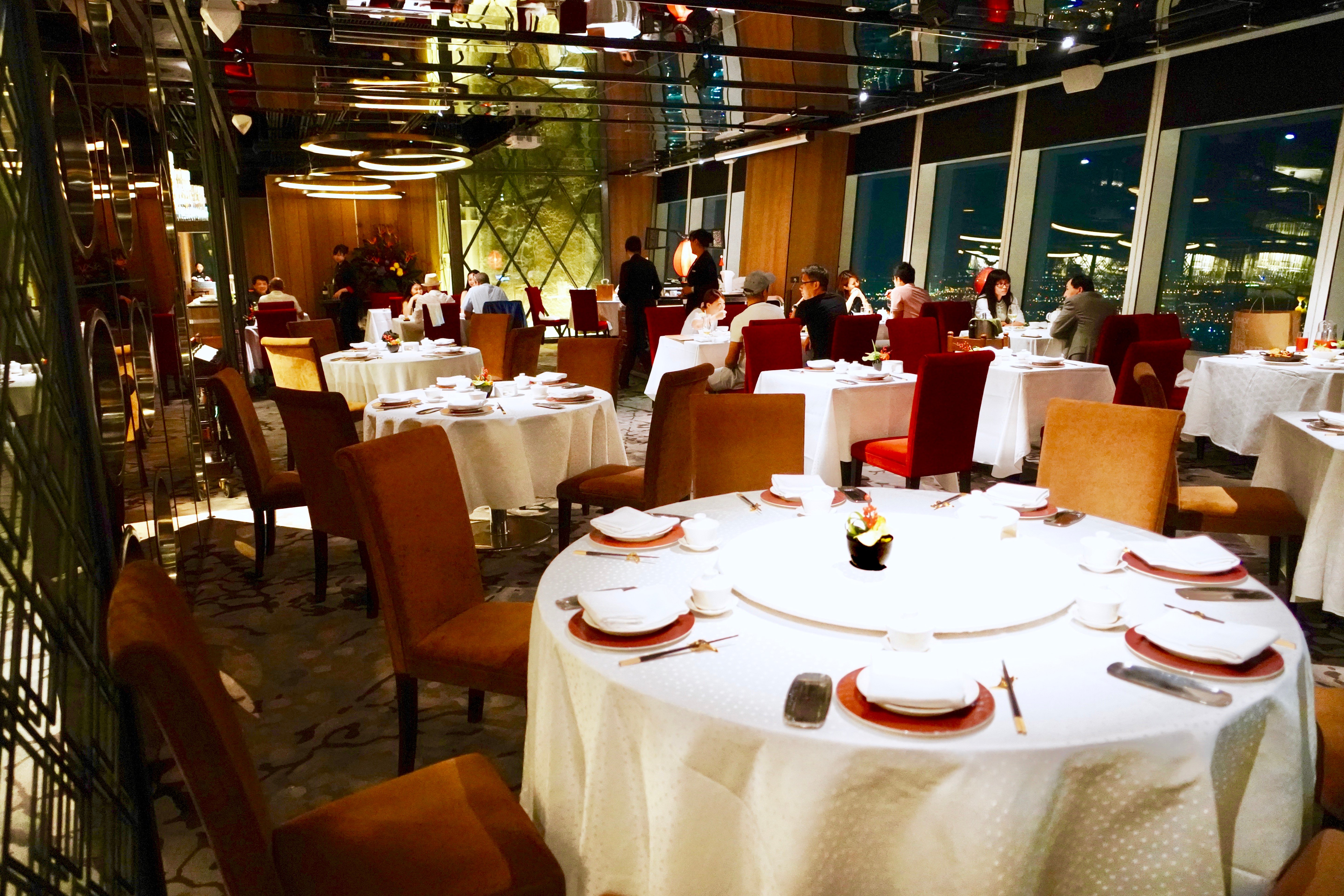
The tables in the center are the traditional circular tables with a rotating table top. These are usually assigned to larger groups of four or more people. I like the chandeliers leading to the private rooms, but in the public dining area, they have these weird disc lights which make the restaurant feel like a mix between a traditional Chinese food house, and a modern style club.
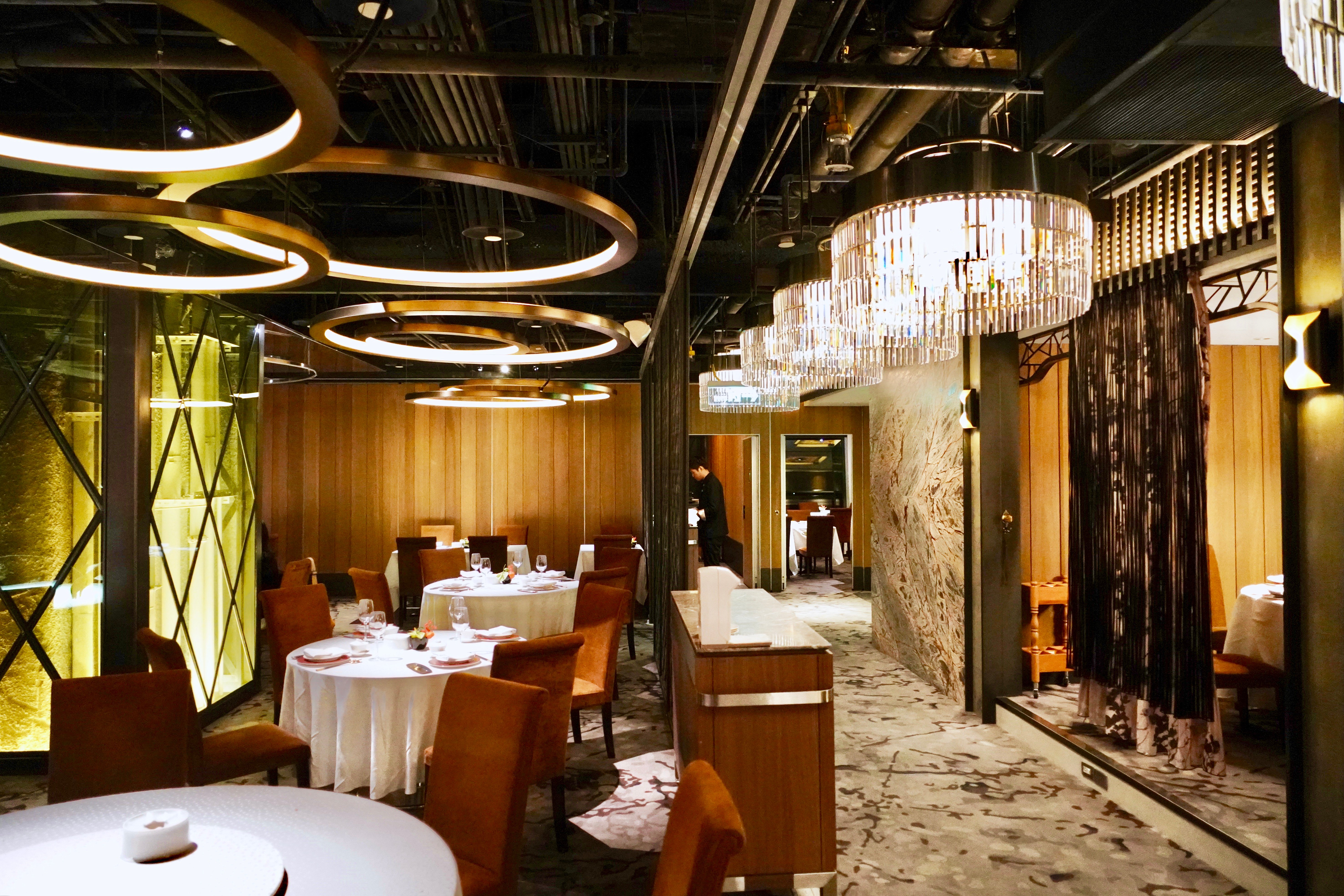
The venue is undeniably classy, but the real attraction in my opinion would be the views and the food.
I should note that the entire Taipei 101 design ethos, is to strike a balance between traditional culture and modern technological advancement, so the modern hubris is probably a result of these fusions of styles.
Taipei is curious in that it's skyline is dominated by a single skyscraper. All around it, are moderately tall buildings, none of skyscraper class, all dwarfed by the 101 by an order of magnitude. This is in contrast to somewhere like Pudong, Shanghai, where there are several skyscrapers and towers of similar height.
Still, the view of the night time city of Taipei was magnificent. There aren't many places in the world where you can dine on the 85th floor, but this is one of them, and now it's time to see what the food is like.
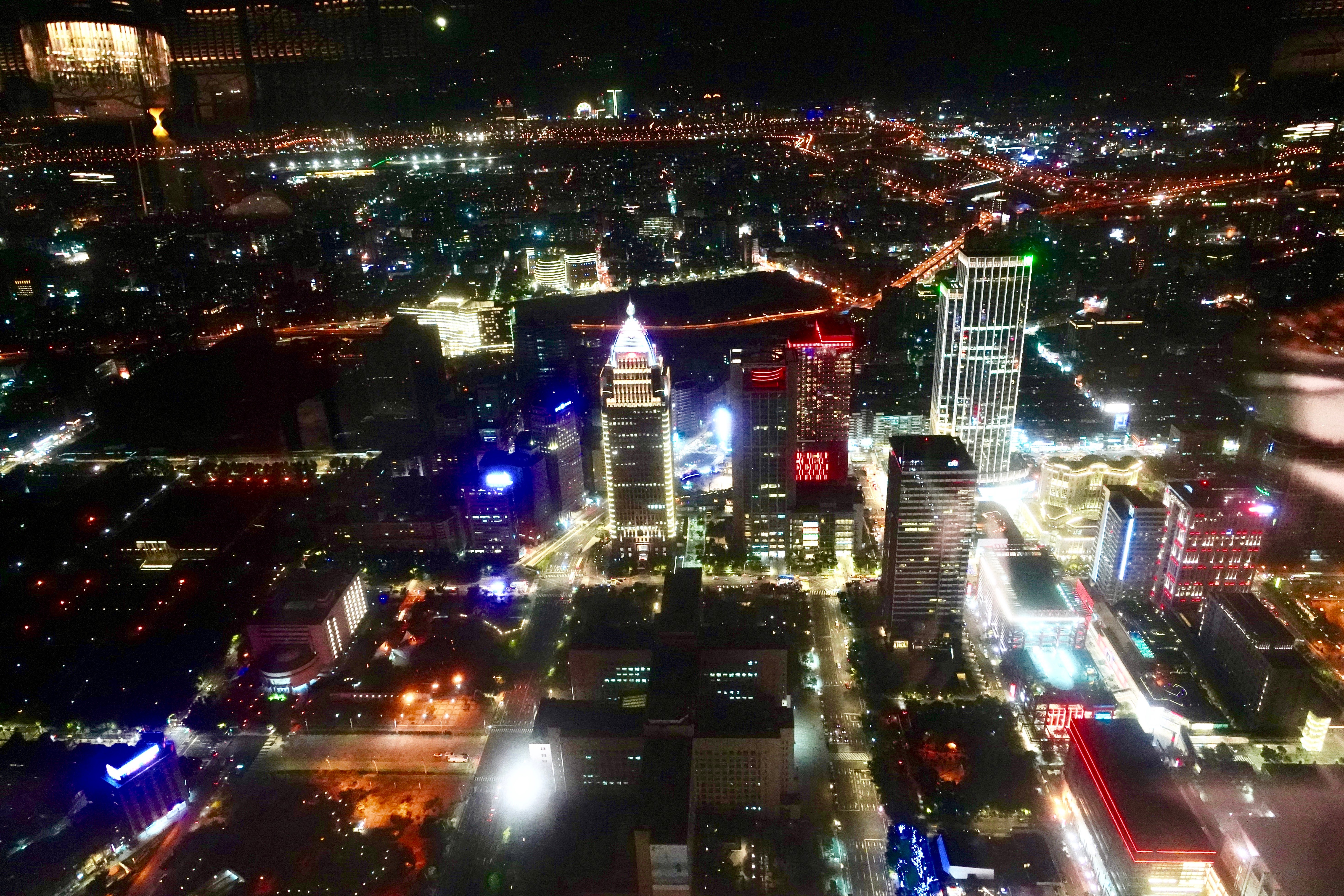
The Menu
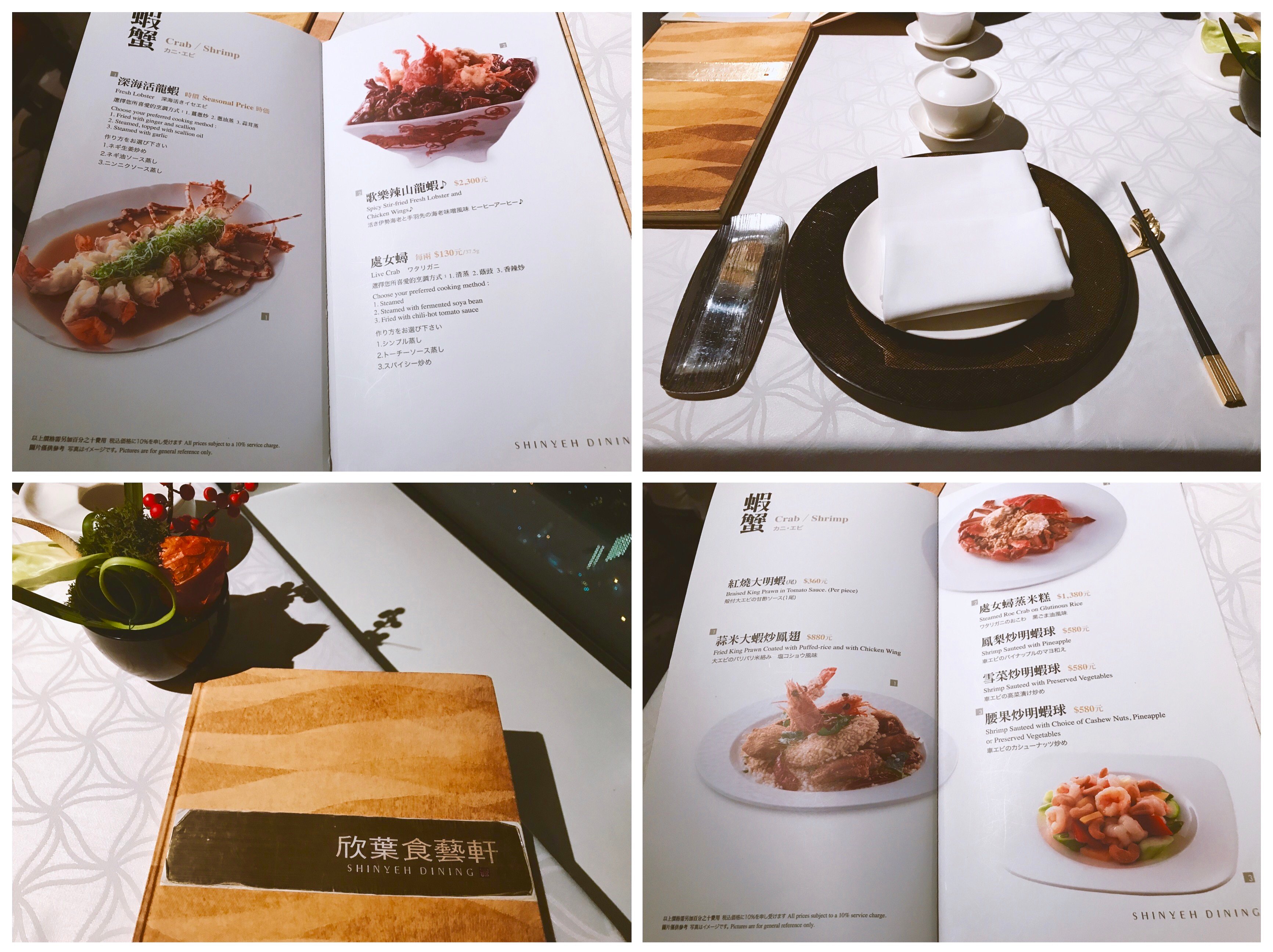
First up, we have the cold dish platter for starters. This consisted of Abalone, Mullet fish caviar, and poached chicken. All three of the dishes offer subtlety in their taste. This is quite different from the Chinese dishes in China where the tastes can be quite overwhelming and require balancing out. I would go as far as saying that in comparison, these tasted quite plain. All three have a different texture and consistency, my favourite? The poached chicken. So many restaurants over-do it with sauces, particularly on chicken but not Shinyeh. Their's was just right.
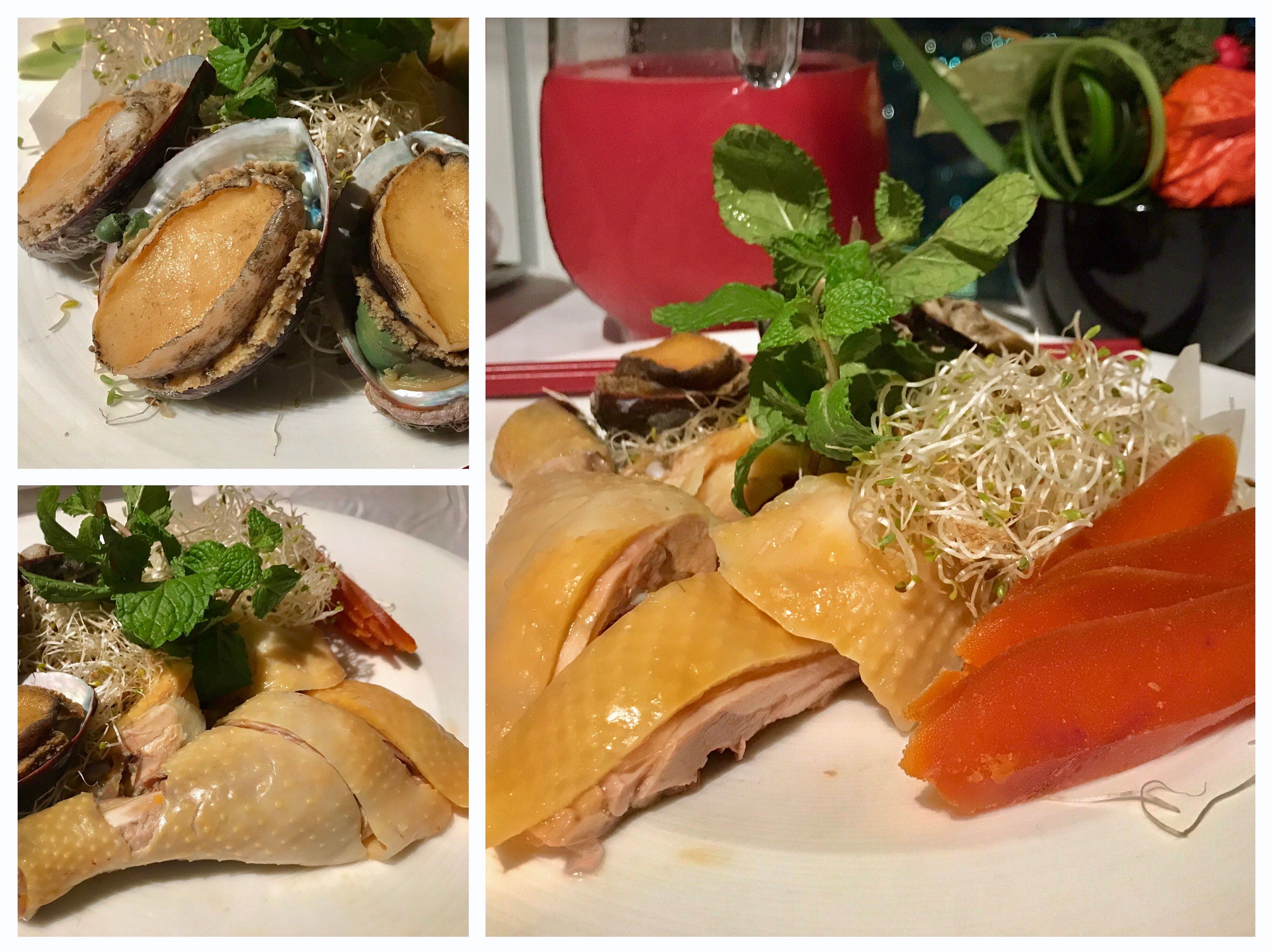
Taiwan is some what famous for it's fried rice. It isn't unusual to come across restaurants which offer a menu entirely full of various fried rice dishes. This particular one is Beef fried rice and it has quite a strong spring onion taste to it. I find that this is the key difference between fried rice in China, and fried rice in Taiwan. I welcome the change because even on such a simple dish, it's something you can appreciate instantly from the unique taste.

One of the most famous staple dishes in Taiwanese cuisine is the 3-cups chicken. This is chicken which is cooked with 1 cup of soy sauce, 1 cup of rice wine, and 1 cup of sesame oil. I decided to try the squid cooked in the 3-cups style since I already had chicken for starters. It was very delicious, I love the slightly chewy texture of the squid, because it forces you to taste the 3 flavours as they pair together. It's also one of the stronger tasting dishes which I had been longing to eat for quite some time.

Fried Oysters
Most people eat Oysters in Taiwan with the Oyster Omelette. It's essentially an Omelette with Chinese cabbage, starch flour, no cheese, and oysters, it's such a popular dish and definitely deserves being on the menu of every Taiwanese restaurant in the world but I prefer to eat that at a nightmarket, in Taiwan, you really can argue that nightmarket food is better than a lot of the restaurant food. Here, the oysters are deep fried with a hint of salt and pepper. It's not quite the same taste as the Hong Kong salt and pepper squid, and it's not the same texture either. Oysters are extremely soft, and almost have no toughness when you chew on them. This dish is much the same, in that aside from the initial crunch on the surface, the Oysters themselves just melt in your mouth. There is rawness to it's taste which is cleverly covered by the batter on the outside.

Fried whitebait with beans
When I was younger, a common way to eat congee, particularly when it was plain, was to add salty fried whitebait to it. I absolutely adored the whitebait when eaten this way, it could turn any dull dish into a very appetising one. This dish gives me that same feeling. I love the crunchiness of the whitebait, and the balanced out saltiness from the beans. It goes perfectly with the fried rice from earlier.

The first and only proper vegetable dish of the meal is none other than Luffa gourd. This is a very delicious and fragrant dish lightly seasoned with fish sauce. The texture of the luffa is soft making it really easy to eat as well as digest. It is commonly cooked with small dried shrimp, though on this occasion, it is garnished with thin strands of enoki mushrooms.

Pineapple Prawn Balls
This dish is quite similar to sweet and sour, except without the sour part. The sweetness is bolstered by the actual pieces of pineapple which were shallow fried together with the prawns. The sauce was quite viscous but not overpowering in taste. I think this one would definitely interest a lot of people, particularly westerners because of it's similarity to their familiar sweet and sour dishes.

Dessert
For dessert, we have the Almond Tofu followed by the Coconut Milk with Sago and Fried Dough Stick. The Almond tofus is only a tad sweet, but it has the very identifiable almont fragrance which boosts it's taste considerably. I like to use my tongue to eat these because they're so soft and subtle in taste.

The dough stick is typically eaten alongside soya milk. However, in Taiwan, apparently it accompanies the Coconut Milk with Sago. It's a strange combination to me because Coconut Milk Sago where I'm from is usually eaten with Mango. Still, it was very delicious and unusually different to what i'm used to.

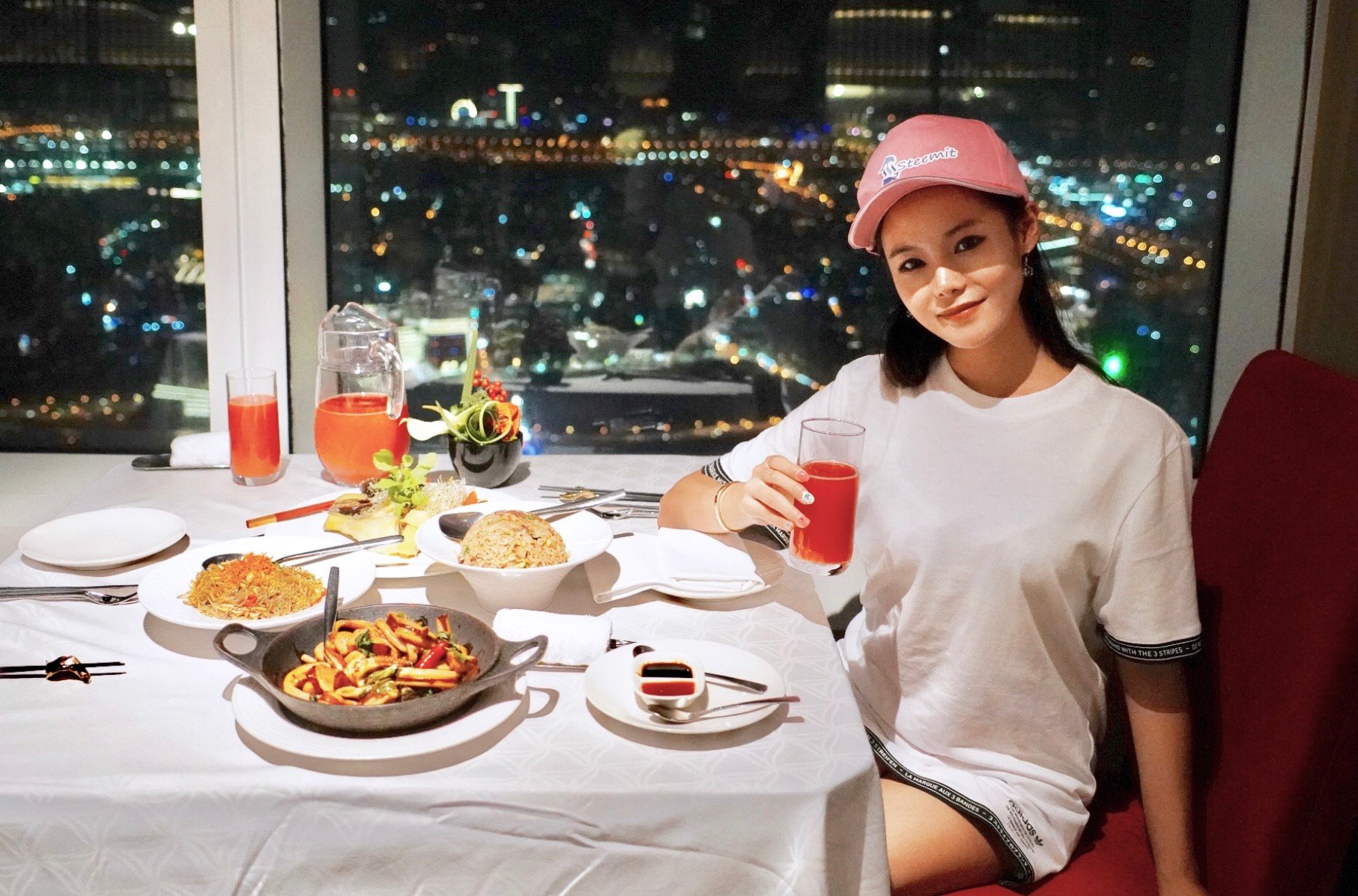
Viewing Taipei 101 from Elephant Mountain
One of the problems with enjoy skyscraper experiences, is that being in the actual building means you don't see it. You can see everything else from a marvelous height but you can't appreciate the building itself whilst inside.
I decided to find somewhere to get a view of the building alongside the city. Most people, including myself, will have shots of the skyscraper from the Xinyi shopping district. I decided I would climb a nearby mountain to get some better shots of the area.
Just a few kilometers from Taipei 101, there is a hiking trail called Xiangshan Nature Trail. It's the perfect place to climb up and get a gorgeous view of the downtown area.
At the base of the mountain, there is this gorgeous temple. The colours are so vivid, standing out against a perfect blue sky.
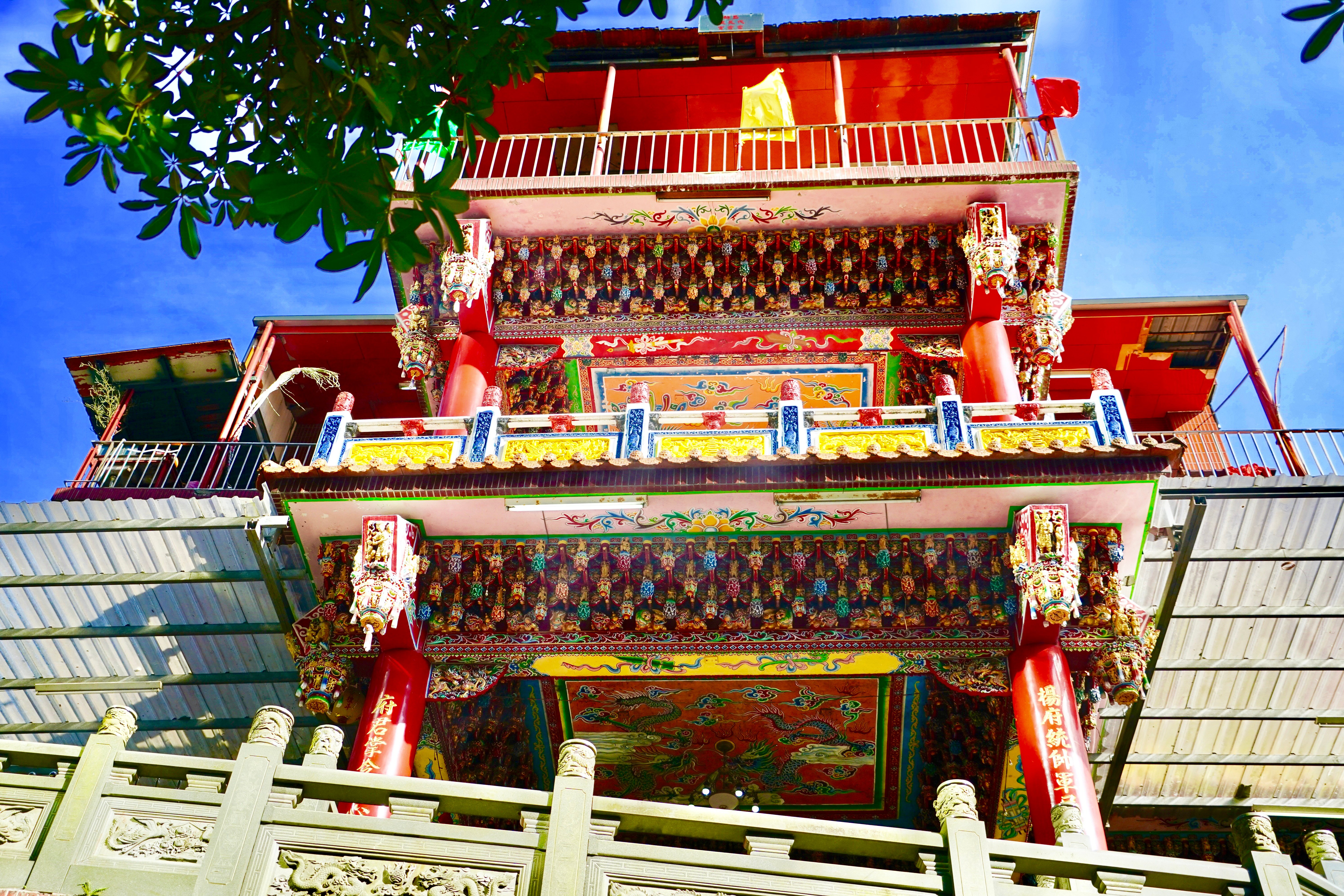
It's called the heaven and clouds palace because when it was built many years ago, it was the highest structure in the area.

The details inside the shrine are incredible. Just take a look at the ceiling and see for yourself.

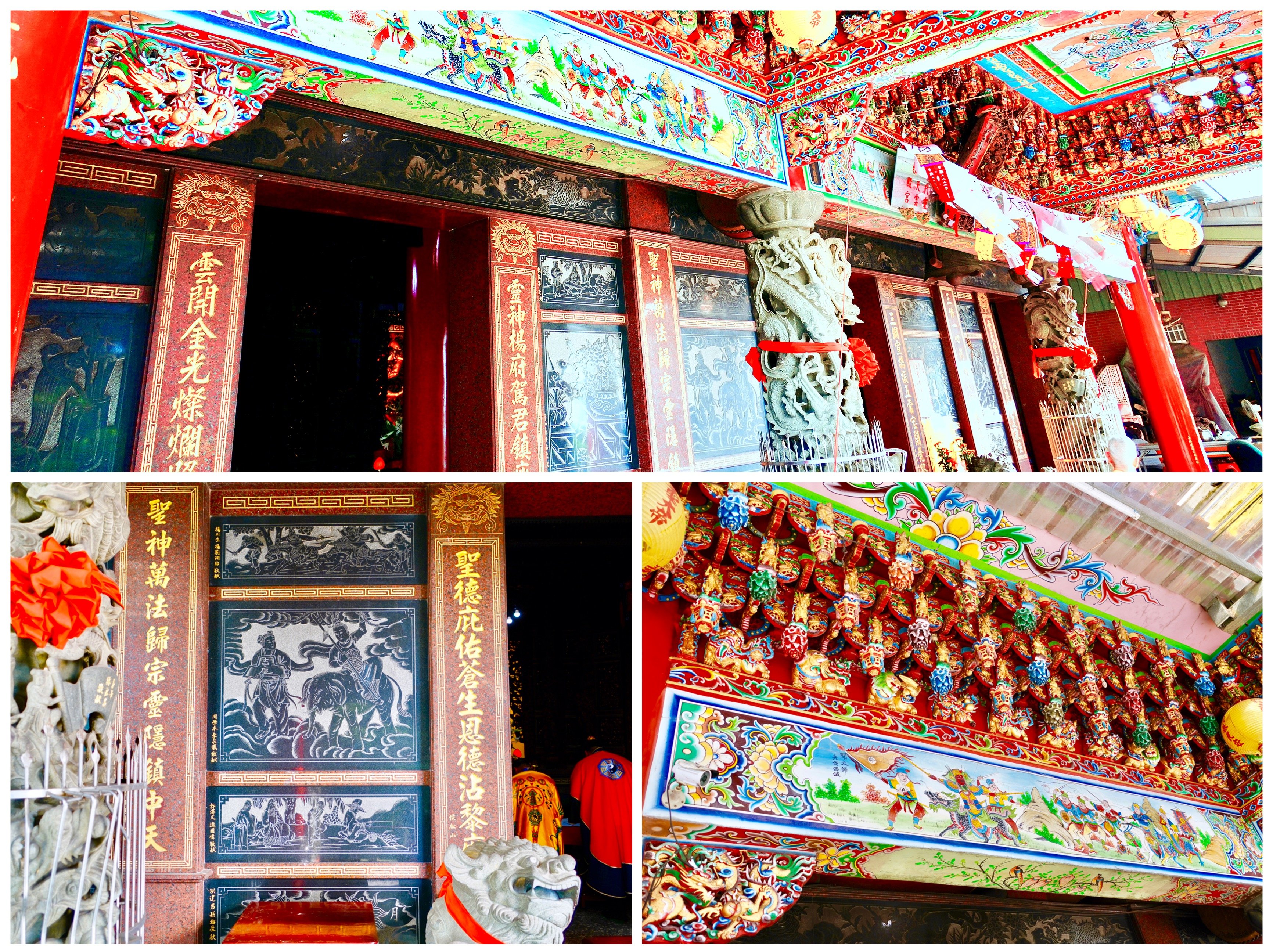
Inside, there was an active worship with the locals playing and singing. Three people seemed to be dressed as the 3 heavenly spirits are leading the worship.

Just a short walk from the temple and we arrive at the base of the mountain trail. You can see the sign for the entrance to the trail, with some elephants on it. The mountain is called Elephant mountain because it supposedly resembles a mountain. Maybe the trail is it's trunk?
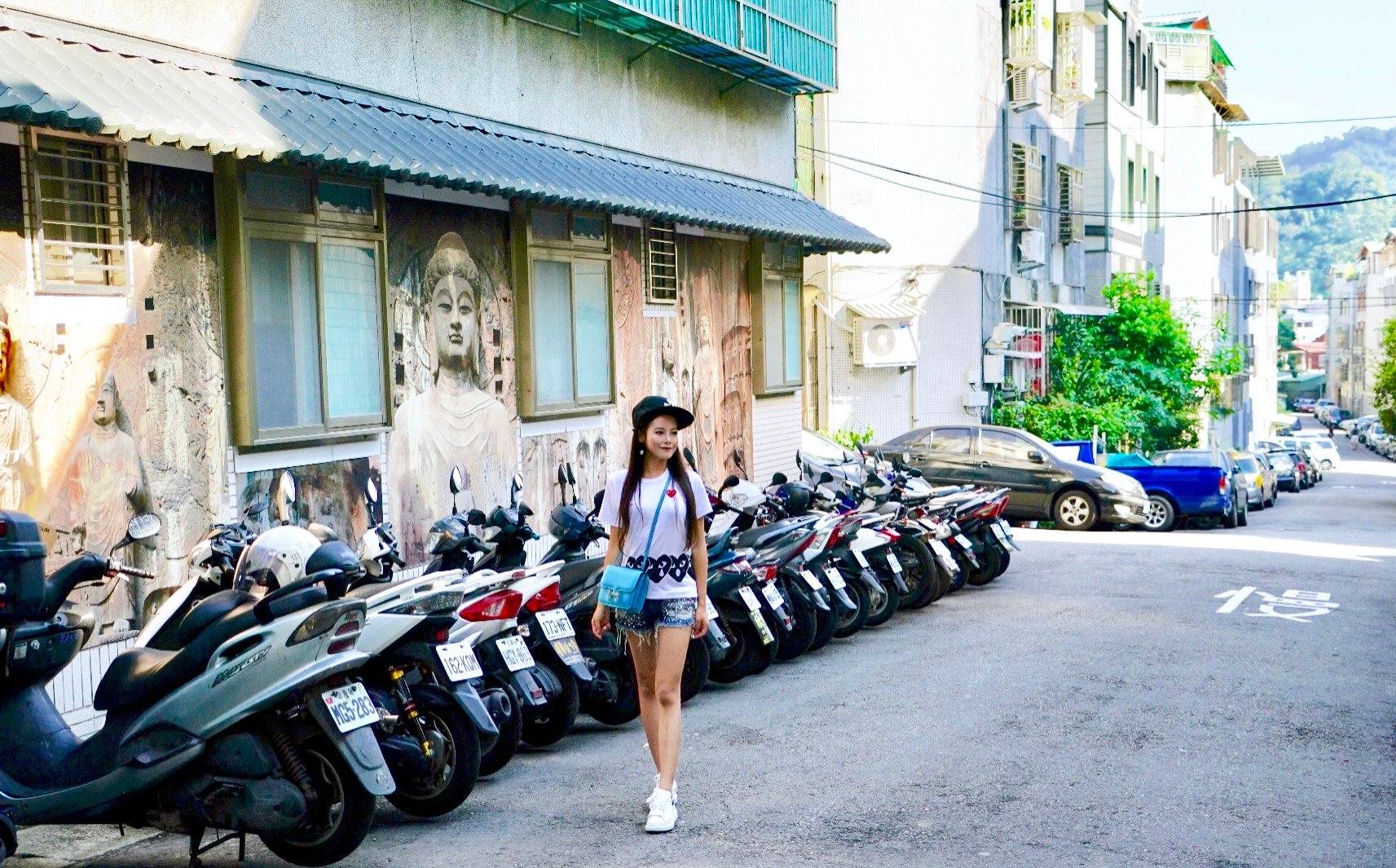

At the top of the trail, there are Six giant rocks which seem to be the end point of the trail. It's quite a climb, but we'll have some stellar views a long the way.
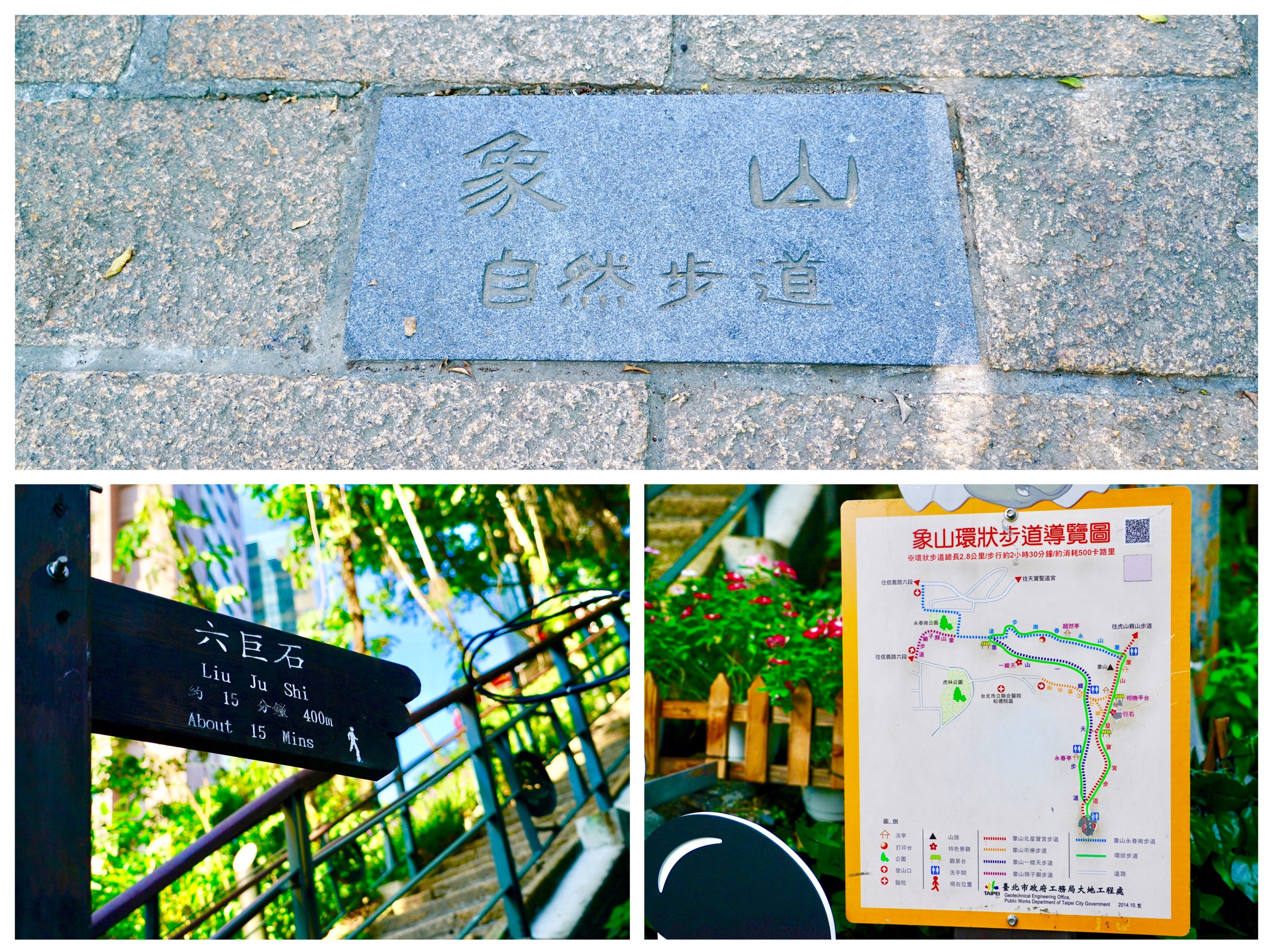
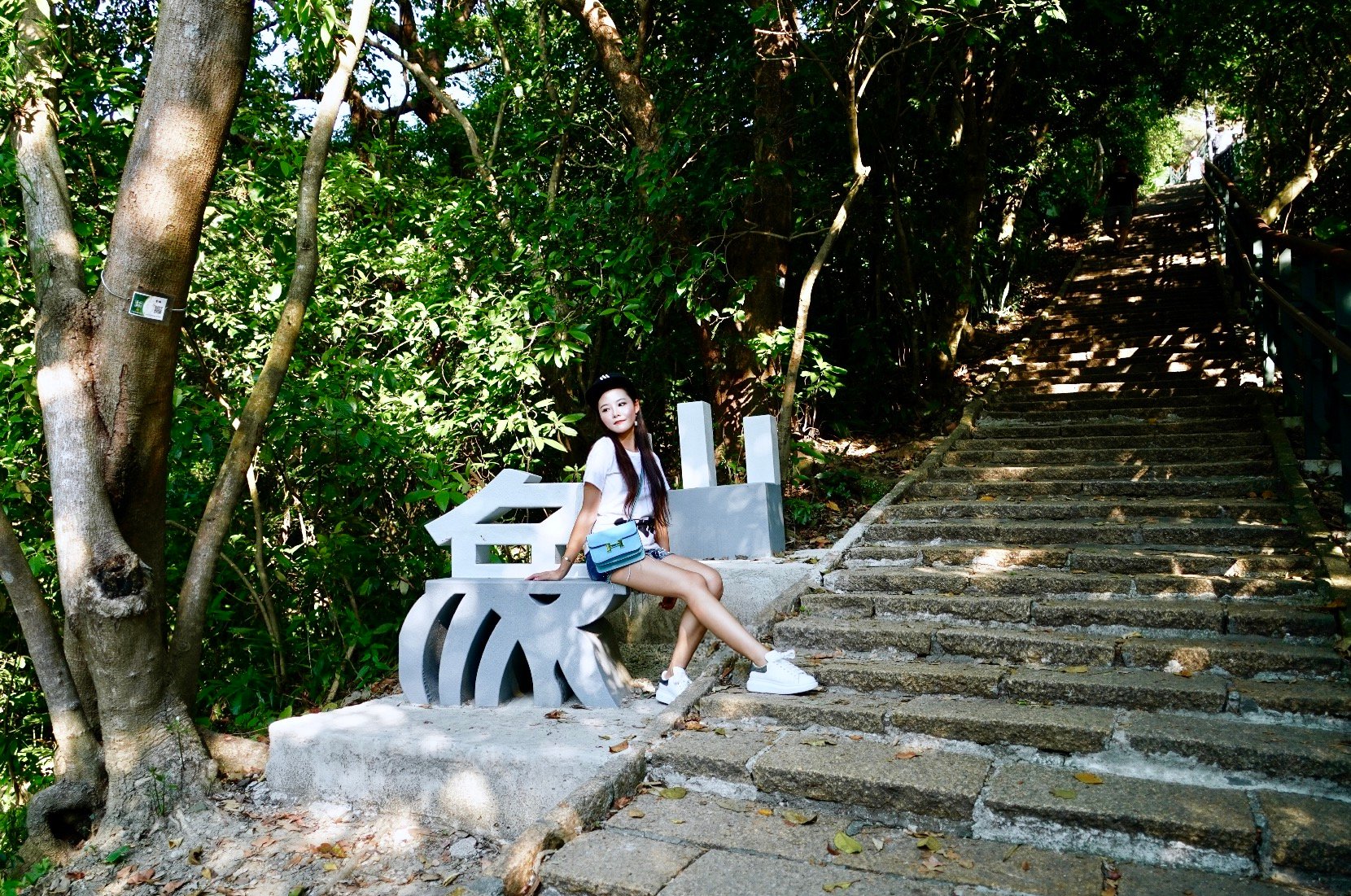
The mountain itself is covered in lush tropical vegetation. Along the route, there are signs pointing out some of the special plants which grow in this area.
As we climb higher up, we are offered a splendid view of downtown Taipei and of course the Taipei 101.
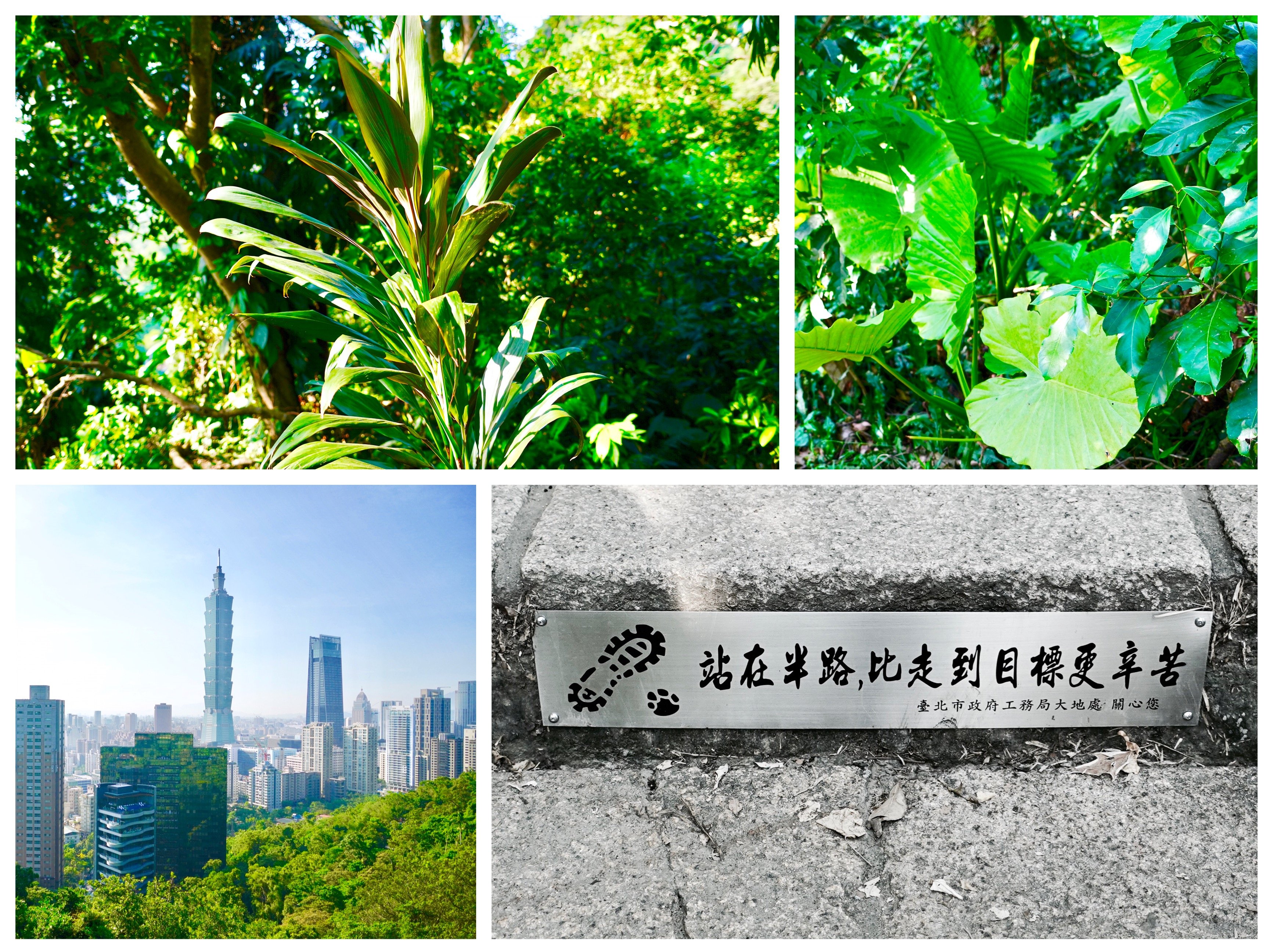
This is the viewing platform about half way up the trail. By this point I had already climbed several hundred steps up a very steep mountain. It was a good time to take a break and enjoy the view.
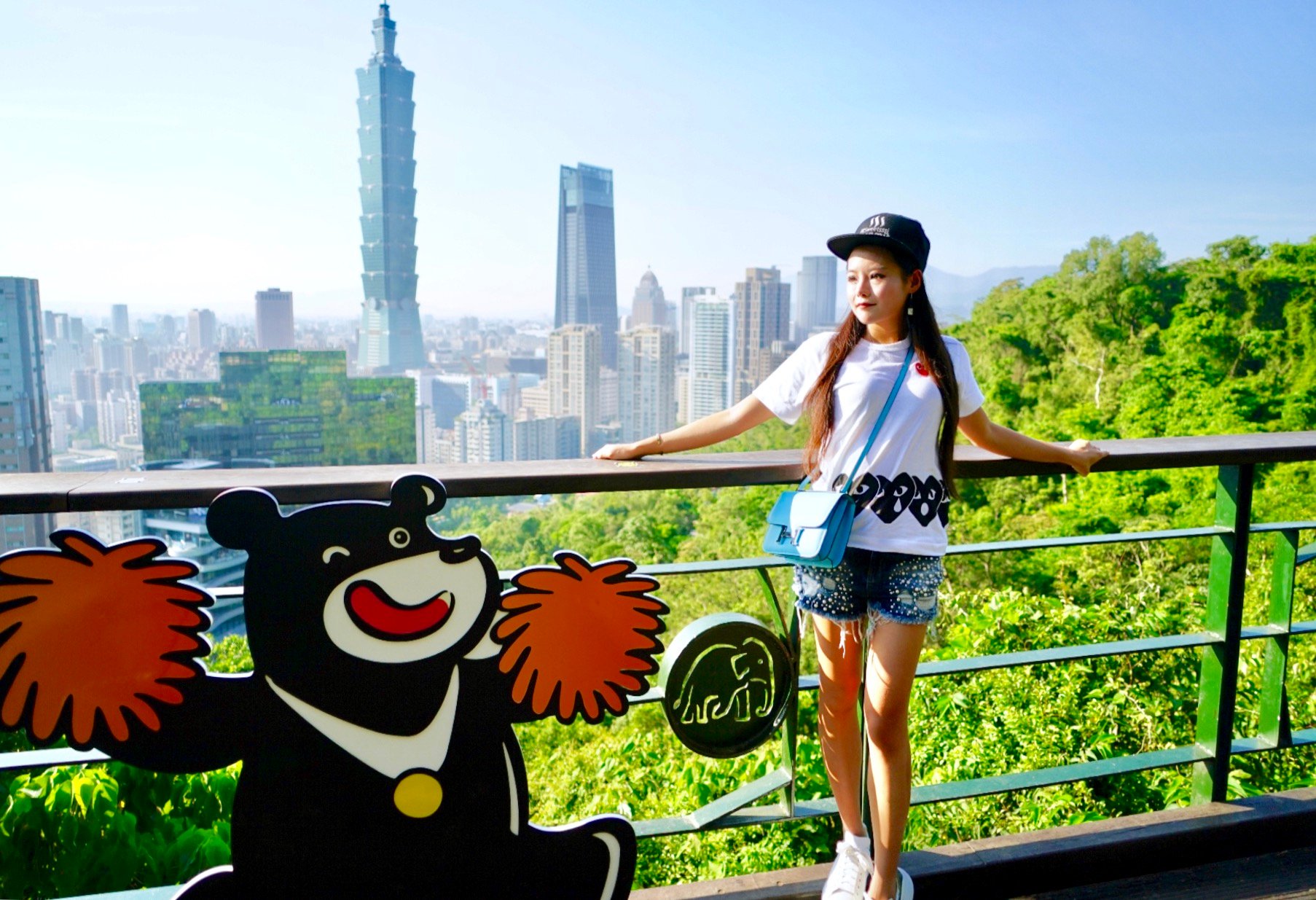

These are the 6 giant rocks. If I wasn't so exhausted from the climb, I might have tried to climb on top of one like the guy in the picture. Suffice to say, I was proud of making it all the way to the top in the blistering heat. The reward was of course the stunning views of the Taipei 101 and downtown city.

Mission accomplished!


That concludes our multi point of view experience of Taiwan's landmark building, the Taipei 101! I've had the opportunity to eat at restaurants all over the world but few opportunities to do so at such a height. Most people who visit will go straight to the observation deck and not realise that you can have a dining experience plus viewing experience combined.
In the past decade, the Taipei 101 has served as a symbol of Taiwan. It reminds the world that Taiwan is an important place, not only for it's industry and economy, but also because of it's people and culture. Modernising Chinese culture need not forego it's foundations and roots.
Please upvote the post if you liked it, follow for more travel and food blogs from around the world, and leave a comment to let me know what you think!
来到台北,总想抓紧一切时间,找寻台北每一处角落的美丽与繁华。台北是一个融合东方的传统文化和现代文明中西交融的不夜城,来到台北怎么能错过它丰富多彩的夜生活。之前带大家探索了台北最接地气的本土生活,体验了深夜钓虾馆的乐趣,今天我想带大家登高望远,换一个独特的视角感受台北的夜生活,俯瞰台北浪漫迷人的夜景。
台北的信义区商圈有着全台北最繁华炫目的都市景观,无论是游客还是本地人都难以抵抗,信义区有着让你逛到翻吃到嗨的魄力,这里有太多丰富多彩活动体验了。来到这片热闹的区域,感觉眼睛都不够看的,街边围绕着吸引人目光的商场,美食嘉年华或者传来悦耳音乐的餐吧,不过最让人着迷的应该就是整个区最显著亮眼的地标性建筑,台北101。台北101是信义区高达509.2米的办公摩天大楼,在2004年12月31日到2010年1月4日它曾一直是“世界第一高楼”,每到夜幕降临,整座城市归于宁静,繁星点点的灯光之中台北101塔就如璀璨钻石般闪耀。
不过在我看来,台北101最大的焦点,并不止是高,而是它高的充满美感。比建造技术更珍贵的是台北101的文化表现力,它在中西文化之间求得了平衡。台北101的外形设计采用了中国传统文化中谦谦君子的物象代表——竹子的造型,又运用中国人的吉祥数字8(谐音发)作为设计单位,建造了8层楼为一结构单元,层层相叠,整体效果充满节奏鲜明的律动美感,宛如劲竹节节高升,又好像花开一般生生不息,节节登至富贵顶峰。台北101展示着东方观念里对未来更宽阔的谅解和包容,成为台湾经典的意象代表建筑。
今天我想带大家从截然不同的两个独特视角来观赏台北101,一个对台北101近距离的观赏,一个是从远处欣赏。台北101大楼分为地上101层和地下5层,其中B1到4楼为5层楼的购物中心, 86至88楼为观景餐厅。101周围的街道热闹非凡,到处装点着节日般气氛的火树银花,霓虹灯闪烁。101塔下陈列着艺术的模型,浪漫的LOVE模型和古代铜钱的雕塑。站在101底下,可以看到在101里面办公的各大公司名称,抬头从正面仰望这雄伟高大的建筑艺术,好像一道通往天堂的天梯,看久了脖子都会感到酸痛,不过我也没有忘记和101近距离同框留念。
101楼下的商场有很多新奇的装饰,我们今天的目的地是坐落于台北101塔85层的正宗台菜馆——欣叶101食艺轩,这里的装修华贵大气,融合了中西方文化的精髓,把中式的古典灯笼,木雕和鱼等古老的文化元素很好的镶嵌在摩登时尚的大块玻璃幕墙餐厅里,坐在落地窗边可以俯瞰整个台北绚丽夺目的夜景。首先上桌的是食艺轩冷三拼,里面有乌鱼子,五味宜兰鲍和土鸡,看得人垂涎欲滴,真是满满一盘美味与营养。服务员端着菲力牛肉炒饭一路飘香的来到餐桌边,炒饭颗粒分明,吃起来油而不腻 。三杯中卷是三杯鸡做法的鱿鱼圈,吃起来软Q弹牙。凤梨炒明虾球,又香又脆,酸甜可口。干贝小鱼花生,完美的下酒菜。盐酥蚵仔,菜如其名,吃起来酥脆的口感。新鲜食蔬丝瓜芳香四溢,清爽可口。古早味十足的杏仁豆腐和杏仁茶油条,吃一口唇齿留香。就这样伴着台北的醉人夜景和地道美食,度过了一个难忘的夜晚。
隔天早上,我对于台北101的美景好似意犹未竟,所以决定再去登山远眺阳光下的台北101。信义区的象山自然步道是登高眺望市区景色的绝佳之地,取名象山是因为山形似象。登山口位于代天霄云宫旁边,霄云宫的建筑五彩缤纷的配色,好看极了,宫内主祀三圣大帝,去的时候正赶上在做仪式,爬象山的路有些漫长,高温,再加上在旁一直干扰的蚊子和各种小昆虫,真的很锻炼体力和内心的意志力。还好最后登顶的时刻是美好的,绝色的市区风景,石头丛中高耸的101塔,象一朵傲然绽放的鲜花,终于合影了一张和101塔身高相仿的照片,也捕捉到了这自然山景和人文景观同框的画面。从这么多不同视角欣赏台北101的美,你更喜欢哪个角度呢?今天的美食之旅就告于段落了,之后还有更多有趣的经历要和大家分享。
